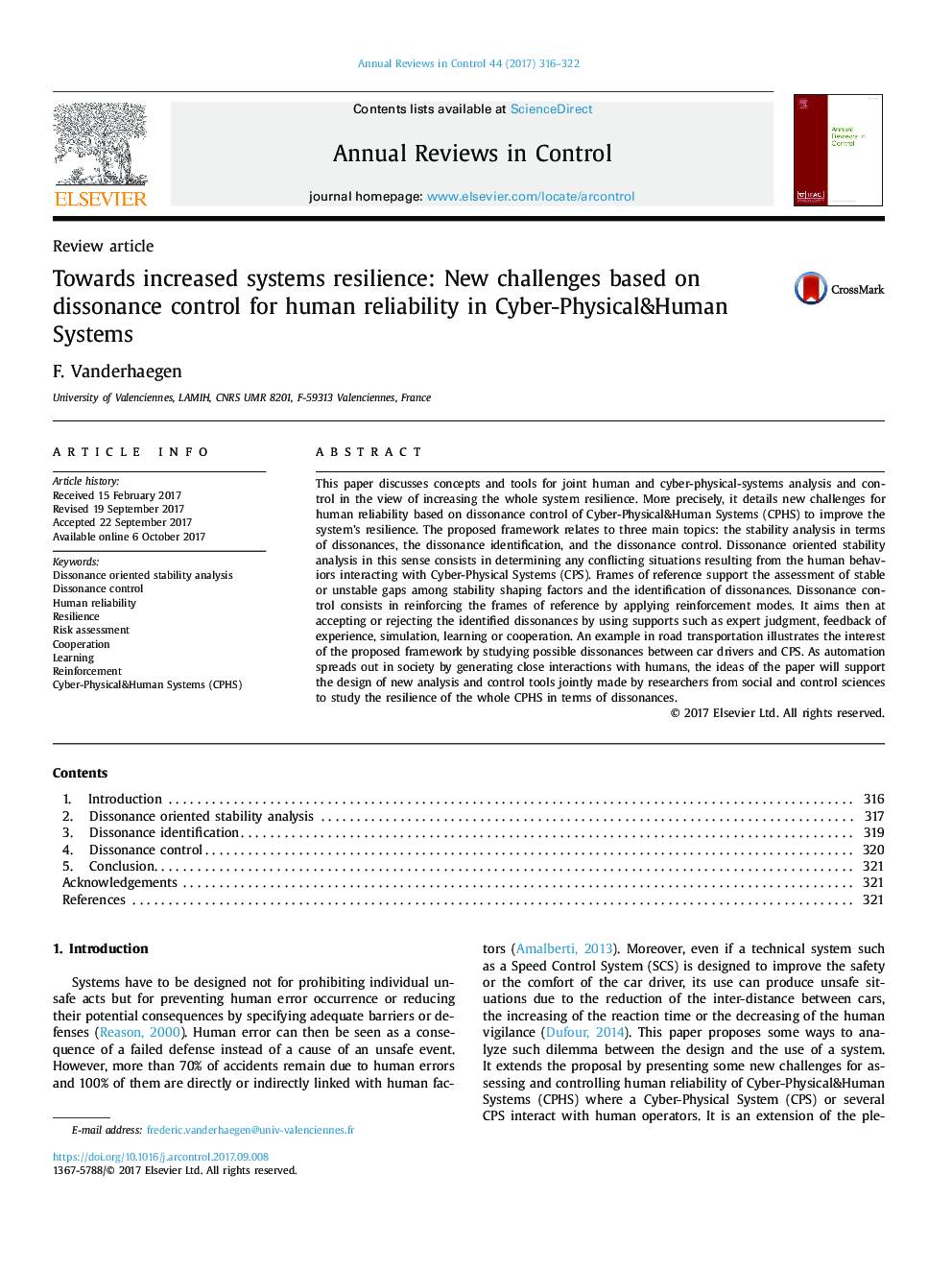| Article ID | Journal | Published Year | Pages | File Type |
|---|---|---|---|---|
| 7107849 | Annual Reviews in Control | 2017 | 7 Pages |
Abstract
This paper discusses concepts and tools for joint human and cyber-physical-systems analysis and control in the view of increasing the whole system resilience. More precisely, it details new challenges for human reliability based on dissonance control of Cyber-Physical&Human Systems (CPHS) to improve the system's resilience. The proposed framework relates to three main topics: the stability analysis in terms of dissonances, the dissonance identification, and the dissonance control. Dissonance oriented stability analysis in this sense consists in determining any conflicting situations resulting from the human behaviors interacting with Cyber-Physical Systems (CPS). Frames of reference support the assessment of stable or unstable gaps among stability shaping factors and the identification of dissonances. Dissonance control consists in reinforcing the frames of reference by applying reinforcement modes. It aims then at accepting or rejecting the identified dissonances by using supports such as expert judgment, feedback of experience, simulation, learning or cooperation. An example in road transportation illustrates the interest of the proposed framework by studying possible dissonances between car drivers and CPS. As automation spreads out in society by generating close interactions with humans, the ideas of the paper will support the design of new analysis and control tools jointly made by researchers from social and control sciences to study the resilience of the whole CPHS in terms of dissonances.
Related Topics
Physical Sciences and Engineering
Engineering
Control and Systems Engineering
Authors
F. Vanderhaegen,
